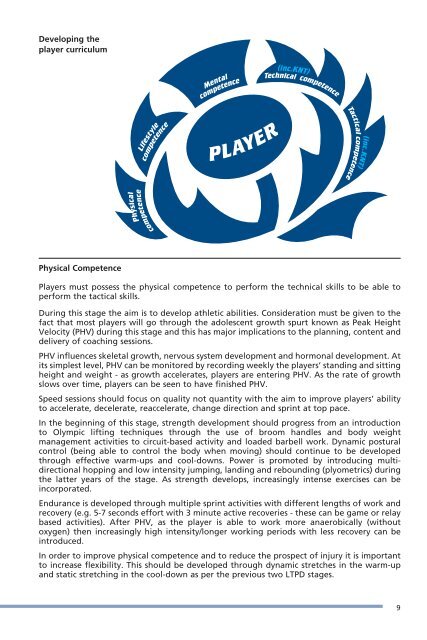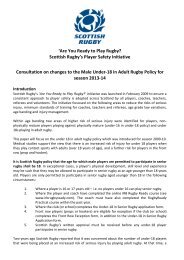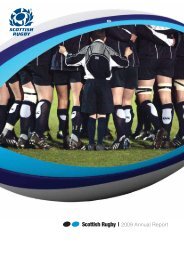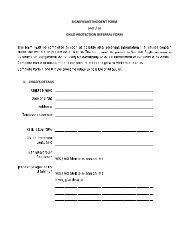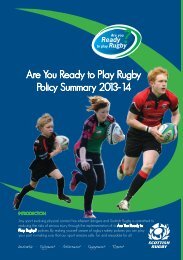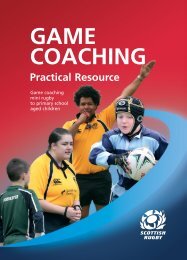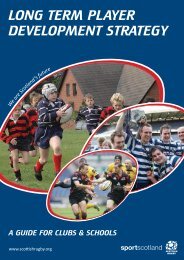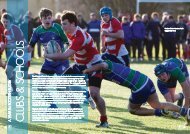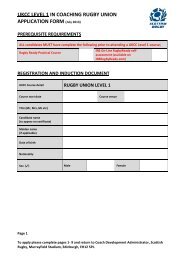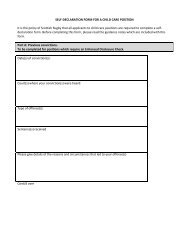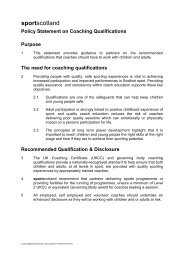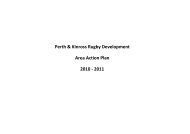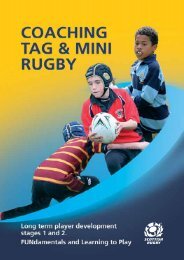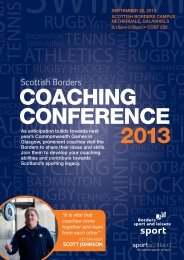LTPDst3cover.qxd (Page 1) - Scottish Rugby Union
LTPDst3cover.qxd (Page 1) - Scottish Rugby Union
LTPDst3cover.qxd (Page 1) - Scottish Rugby Union
- No tags were found...
Create successful ePaper yourself
Turn your PDF publications into a flip-book with our unique Google optimized e-Paper software.
Developing theplayer curriculumMentalcompetence(inc.KNT)TechnicalcompetenceTacticalLifestylecompetencePLAYERcompetence(inc.KNT)competencePhysicalPhysical CompetencePlayers must possess the physical competence to perform the technical skills to be able toperform the tactical skills.During this stage the aim is to develop athletic abilities. Consideration must be given to thefact that most players will go through the adolescent growth spurt known as Peak HeightVelocity (PHV) during this stage and this has major implications to the planning, content anddelivery of coaching sessions.PHV influences skeletal growth, nervous system development and hormonal development. Atits simplest level, PHV can be monitored by recording weekly the players’ standing and sittingheight and weight - as growth accelerates, players are entering PHV. As the rate of growthslows over time, players can be seen to have finished PHV.Speed sessions should focus on quality not quantity with the aim to improve players’ abilityto accelerate, decelerate, reaccelerate, change direction and sprint at top pace.In the beginning of this stage, strength development should progress from an introductionto Olympic lifting techniques through the use of broom handles and body weightmanagement activities to circuit-based activity and loaded barbell work. Dynamic posturalcontrol (being able to control the body when moving) should continue to be developedthrough effective warm-ups and cool-downs. Power is promoted by introducing multidirectionalhopping and low intensity jumping, landing and rebounding (plyometrics) duringthe latter years of the stage. As strength develops, increasingly intense exercises can beincorporated.Endurance is developed through multiple sprint activities with different lengths of work andrecovery (e.g. 5-7 seconds effort with 3 minute active recoveries - these can be game or relaybased activities). After PHV, as the player is able to work more anaerobically (withoutoxygen) then increasingly high intensity/longer working periods with less recovery can beintroduced.In order to improve physical competence and to reduce the prospect of injury it is importantto increase flexibility. This should be developed through dynamic stretches in the warm-upand static stretching in the cool-down as per the previous two LTPD stages.9


